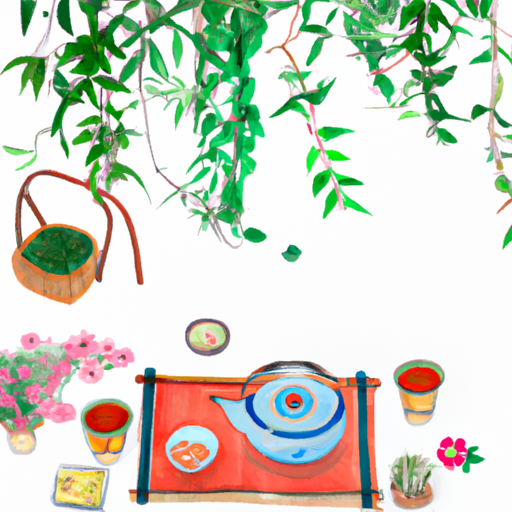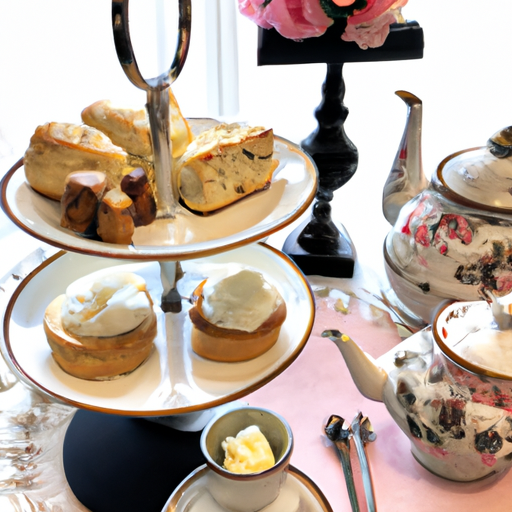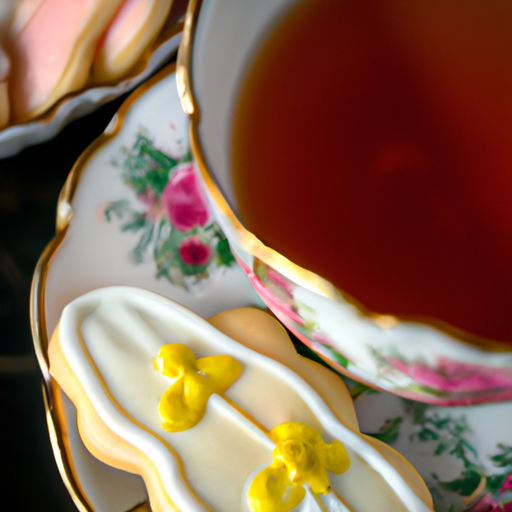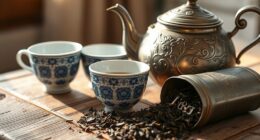Oh, tea. The drink that has captivated the world for centuries. It’s an acquired taste, they say. But oh, how worth it it is to develop a love for this enchanting beverage. If you don’t already fancy a cup of tea, fear not, for I am here to guide you on a journey of taste and discovery. It may not be love at first sip, my dear reader, but trust me, the rewards are plentiful.
Tea, with its myriad of flavors and health benefits, is an experience that should not be missed. From the calming effects to the tantalizing aroma, there is something for everyone. But where to start? Well, my dear tea novice, allow me to be your guide.
In this article, we will explore the different types of tea, the art of brewing, and the secrets to truly enjoying the tea experience.
So, sit back, relax, and let’s embark on a delightful adventure through the world of tea. Get ready to savor each sip, as we uncover the tips and tricks to developing a taste for tea. It’s time to elevate your tea game and indulge in the simple pleasures that this wonderful drink has to offer.
Let’s dive in, shall we?
Key Takeaways
- Tea offers myriad flavors and health benefits, making it worth developing a love for.
- Proper brewing techniques, including considering water temperature, steeping times, and water-to-leaf ratio, are important for enhancing the flavor of tea.
- Using the right teaware, such as porcelain, glass, or clay, in the appropriate size with good heat retention, is crucial for maintaining optimal brewing temperature.
- Engaging in a tea ceremony can foster a deep connection with tea, elevate the overall tea experience, and create a sense of community and connection.
Types of Tea
I’ve learned that there are different types of tea, and they all come from the same plant but have their own unique characteristics.
Each type of tea offers different flavors and health benefits. For those who enjoy a more delicate taste, white tea is a great option, while green tea provides a refreshing and grassy flavor.
Black tea, on the other hand, offers a bold and robust taste that is perfect for those who prefer a stronger flavor. Oolong tea falls in between black and green tea, with a complex and slightly fruity taste.
Herbal teas, such as chamomile or peppermint, have their own distinct flavors and are often enjoyed for their soothing and calming effects.
Exploring the various types of tea can be a delightful journey of discovering different flavors and reaping the health benefits they offer.
Tips for Brewing
To improve the flavor of your brewed tea, experiment with different water types, ratios, temperatures, steep times, and brewing styles. The way you brew your tea can greatly affect its taste, so it’s important to pay attention to these details.
Here are three tips to help you brew the perfect cup of tea:
-
Use the right water temperature: One common mistake is using boiling water for all types of tea. Different teas require different water temperatures to bring out their best flavors. Green and white teas, for example, are delicate and should be brewed with water that’s around 175°F (80°C), while black teas can be brewed with water that’s closer to boiling point.
-
Don’t oversteep your tea: Steeping your tea for too long can result in a bitter taste. Follow the recommended steeping time for the type of tea you’re brewing. Generally, green teas require a shorter steeping time of around 2-3 minutes, while black teas can be steeped for 3-5 minutes.
-
Pay attention to the water-to-leaf ratio: Using too much or too little tea leaves can affect the strength and flavor of your brew. Follow the recommended ratio of tea to water for the best results. As a general guideline, use 1 teaspoon of tea leaves for every 8 ounces of water.
By taking these tips into consideration, you can enhance the flavor of your brewed tea and enjoy a more satisfying tea-drinking experience.
Enjoying Tea Experience
One way to enhance the enjoyment of the tea experience is by experimenting with different brewing styles, such as using a gaiwan or a traditional tea ceremony set, to add a touch of elegance and ritual to the process. For example, imagine sitting down at a beautifully set tea table, carefully pouring hot water over the leaves in a gaiwan, and slowly sipping the tea while appreciating the intricate flavors and aromas.
| Benefits of Tea Ceremonies | How to Choose Teaware |
|---|---|
| 1. Promotes mindfulness and relaxation | 1. Consider the material: porcelain, glass, or clay |
| 2. Enhances the appreciation of tea | 2. Choose a size that suits your preferred brewing method |
| 3. Creates a sense of community and connection | 3. Look for teaware with good heat retention |
Engaging in a tea ceremony allows one to fully immerse themselves in the tea-drinking experience, fostering a deep connection with the tea and the moment. It promotes mindfulness and relaxation, allowing you to savor every sip. Additionally, the ritualistic nature of a tea ceremony enhances the appreciation of tea as an art form, elevating the overall experience.
When choosing teaware, it is essential to consider the material, size, and heat retention properties. Porcelain, glass, and clay are popular choices, each offering unique characteristics. The size of the teapot or gaiwan should align with your preferred brewing method and the number of servings desired. Lastly, teaware with good heat retention helps maintain the optimal temperature for brewing, ensuring a flavorful and enjoyable cup of tea.
Frequently Asked Questions
How long does it take to develop a taste for tea?
Developing a taste for tea varies from person to person. It depends on individual preferences and the exposure to different tea varieties. It may take time and exploration to find the tea that suits your palate.
Can I drink tea if I have a caffeine sensitivity?
Tea can be decaffeinated, making it suitable for those with caffeine sensitivity. Herbal teas such as chamomile, peppermint, and rooibos are great options. They offer a variety of flavors and are naturally caffeine-free.
Are there any health benefits to drinking tea?
Drinking tea offers numerous health benefits. Different types of tea, such as green, black, and herbal teas, are known for their unique health-promoting properties, including antioxidants, improved heart health, reduced risk of chronic diseases, and enhanced immune function.
Can I use tea bags instead of loose leaf tea?
Yes, tea bags can be used instead of loose leaf tea. However, using a tea infuser allows for better flavor extraction. There are different types of tea bags available, but loose leaf tea offers the advantage of higher quality and more diverse flavors.
How can I properly store tea to maintain its freshness?
Proper tea storage is crucial for maintaining freshness and avoiding tea spoilage. To preserve the flavor and aroma, store tea in an airtight container away from light, moisture, and strong odors.
Conclusion
In conclusion, developing a taste for tea is a journey that requires patience and exploration. By trying different types of tea and experimenting with brewing methods, one can discover their favorite flavors and enjoy the numerous benefits that tea has to offer.
It’s fascinating to note that, according to a study published in the Journal of Nutrition, regular tea consumption has been associated with a lower risk of heart disease and stroke. So, why not embark on this delightful adventure and let tea become a part of your daily routine? Cheers to a cup of tea and a healthier you!










